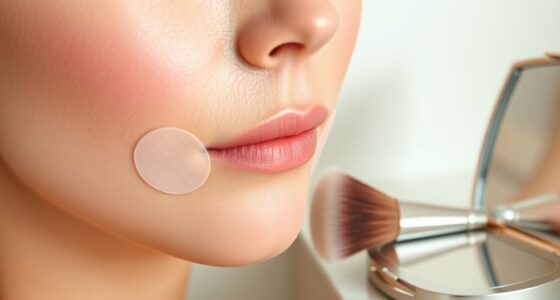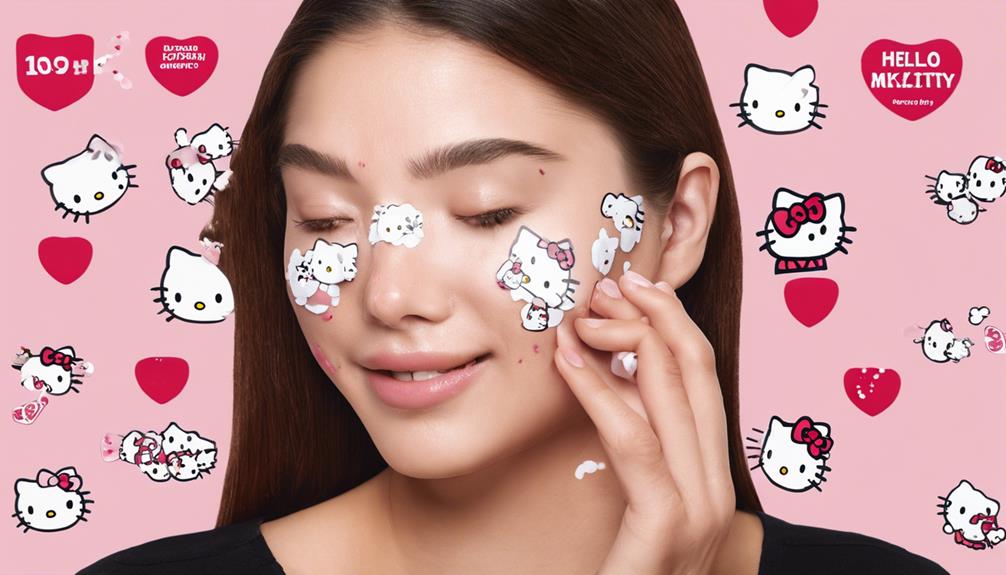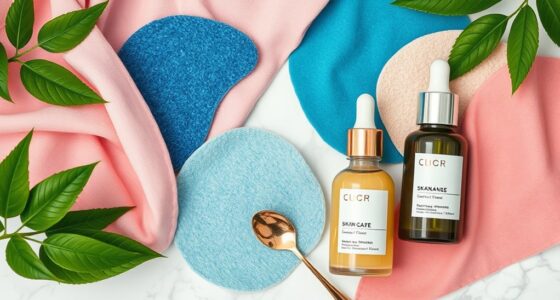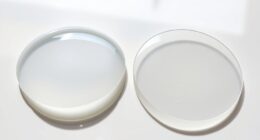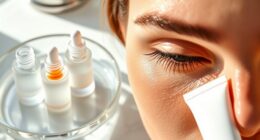These cute pimple patches not only tackle blemishes efficiently, but they also elevate your skincare routine with style. Designed to promote faster healing, they absorb excess fluid and act as a protective barrier. Plus, they’re discreet enough to wear under makeup. With active ingredients like salicylic acid and tea tree oil, they target inflammation effectively. When you choose the right one for your skin, you’ll enjoy both function and fashion. Want to know which patch suits you best?
Key Takeaways
- Cute designs of pimple patches make skincare fun and stylish for daily wear, appealing to younger generations.
- Hydrocolloid technology effectively absorbs fluid and reduces inflammation, promoting faster healing of surface-level pimples.
- Medicated options with salicylic acid or tea tree oil target bacteria, enhancing acne treatment while maintaining a chic look.
- Pimple patches act as a protective barrier, preventing skin picking and reducing the risk of scarring during the healing process.
- Discreet and nearly invisible under makeup, these patches boost confidence while providing effective skincare solutions.
Understanding Different Types of Pimple Patches

When it comes to pimple patches, you’ll find several types designed for different skin concerns and blemishes.
Hydrocolloid patches are perfect for surface-level pimples, as they absorb fluid while creating a moist healing environment. These patches are particularly effective for surface-level inflammatory acne as they help draw out infection while keeping the skin moist.
If you’re dealing with inflammation, non-hydrocolloid patches containing salicylic acid or tea tree oil target bacteria effectively.
For deeper cystic acne, microneedling patches can deliver active ingredients right into the skin.
Medicated patches are infused with acne-fighting ingredients to reduce swelling, while non-medicated patches simply focus on moisture retention.
Each type has its own purpose, so choosing the right one is key to effectively managing your breakouts and achieving clearer skin.
Benefits of Using Pimple Patches
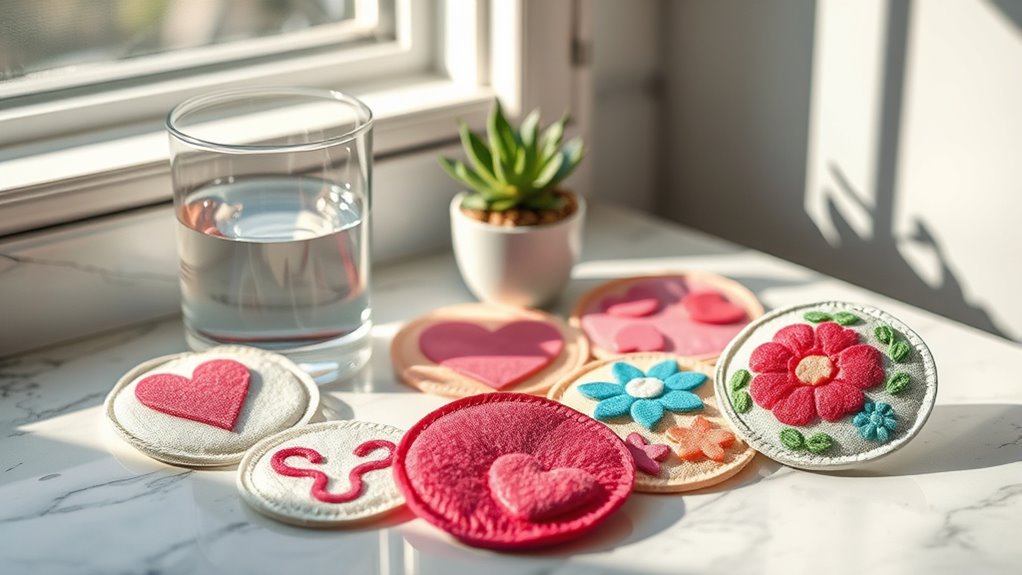
Pimple patches offer a range of benefits that can greatly improve your skincare routine. They promote faster healing by absorbing fluid and pus, creating a dry environment that helps your skin recover. Pimple patches are typically used overnight for optimal results, allowing for better absorption and healing.
You’ll notice reduced inflammation, as the patches minimize redness and swelling associated with pimples. They also act as a protective barrier, preventing bacteria from entering and causing further irritation.
Discreet treatment is another plus; these thin, clear patches are nearly invisible, making them perfect for daytime use under makeup. Plus, they help prevent you from picking at your skin, which can lead to scarring.
Wear them overnight or throughout the day for maximum effectiveness, and reap the rewards of clearer, healthier skin.
Key Active Ingredients in Pimple Patches

While you might be familiar with various skincare products, understanding the key active ingredients in pimple patches can elevate your acne treatment game.
Hydrocolloid forms a protective barrier, absorbing excess fluid to reduce inflammation. If you need deeper treatment, salicylic acid exfoliates and unclogs pores, though it may cause dryness.
For antibacterial action, tea tree oil effectively reduces inflammation and dries out pimples. To combat dryness from other treatments, hyaluronic acid provides hydration, while niacinamide enhances skin tone and texture, improving your skin’s barrier function. Pimple patches are available in various sizes to cover or hide acne, making them a convenient option for targeted treatment.
Each of these ingredients plays an essential role, helping you tackle different skin concerns while keeping your complexion looking great. Choose patches with these actives that suit your specific needs!
How Effective Are Pimple Patches?

Understanding the effectiveness of pimple patches can help you make informed decisions about your acne treatment options.
These hydrocolloid patches absorb excess fluid, promoting healing and reducing inflammation. While clinical evidence is limited, studies indicate they can improve pimple size and redness, particularly for surface-level acne like open whiteheads. They create a moist environment for skin healing which is essential for effective recovery.
They outperform some non-hydrocolloid options in reducing inflammation, but keep in mind they’re less effective on cystic or deep pimples. Some patches even contain additional ingredients like salicylic acid or tea tree oil to fight bacteria.
Incorporating Pimple Patches Into Your Skincare Routine

To effectively incorporate pimple patches into your skincare routine, start by ensuring your skin is properly prepped. Cleanse your face with a gentle, sulfate-free cleanser to remove dirt and makeup, then dry the affected area thoroughly.
Avoid applying heavy products like serums or moisturizers before placing the patch, as this can prevent it from adhering properly. Choose a patch that matches the size of your pimple and press it down gently to avoid air bubbles. For best results, wear the patch overnight and remove it in the morning. After taking off the patch, moisturize with a lightweight formula to keep your skin hydrated.
This simple process can greatly enhance your skincare routine while targeting pesky pimples effectively. Additionally, using patches with hydrocolloid properties helps absorb excess fluid, enhancing healing.
Choosing the Right Pimple Patch for Your Skin

How do you choose the right pimple patch for your skin type? Start by identifying your skin’s needs.
If you have sensitive skin, opt for non-medicated hydrocolloid patches to avoid irritation. Hydrocolloid patches are effective because they absorb fluids and create a protective barrier over the pimple.
For dry skin, look for patches infused with moisturizing ingredients like hyaluronic acid.
Those with oily skin may prefer medicated patches that contain salicylic acid to combat inflammation and excess oil.
Medicated patches with salicylic acid are ideal for oily skin, helping to reduce inflammation and control excess oil.
If you’re dealing with cystic acne, microneedle patches can deliver treatment deep into the skin.
You can also express your style with colorful or designed patches while treating your acne.
Remember, pimple patches treat existing breakouts, so consider combining them with other treatments for the best results.
Choose wisely to keep your skin happy and healthy!
Tips for Applying and Removing Pimple Patches

When it comes to applying and removing pimple patches, your preparation and technique can make a big difference.
Start by cleansing your skin thoroughly to eliminate dirt and bacteria, then pat it dry with a clean towel for better adhesion. Always apply patches on clean skin, free from makeup and other products.
Choose a patch size that covers the pimple and a bit of the surrounding area. Carefully remove the backing without damaging the patch, then press it gently onto your skin, ensuring there are no air bubbles. Remember that these patches are made with hydrocolloid material, which helps extract gunk from pimples effectively.
Hold the patch for 20-30 seconds to activate the adhesive. Leave it on for at least 6 hours or overnight, removing it once it turns white for best results.
Stylish and Functional: The Aesthetic Appeal of Pimple Patches
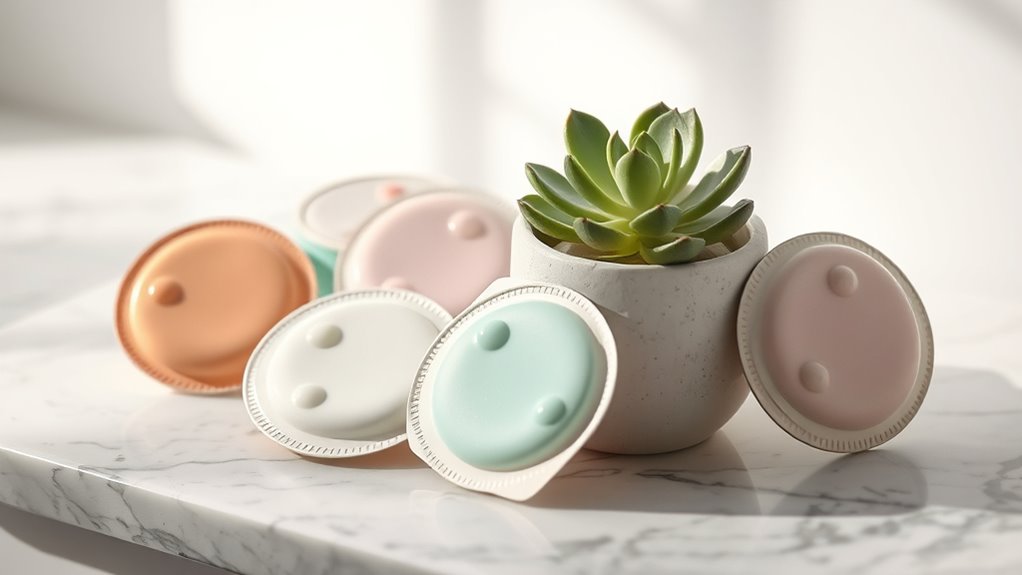
Applying pimple patches not only offers a practical solution for acne but also presents a stylish way to embrace skincare. With a variety of designs, you can choose from star-shaped stickers to colorful options that double as decorative items. These patches blend seamlessly with your skin tone, allowing you to wear them with confidence. They’ve become a fashionable statement, particularly among younger generations, thanks to celebrity endorsements and runway appearances. In addition to their stylish look, the patches are designed for all-day wear and comfort, making them perfect for daily use.
Beyond their aesthetic appeal, pimple patches utilize hydrocolloid technology to absorb impurities and reduce inflammation, creating a moist environment for faster healing. Additionally, regular use of these patches can contribute to maintaining skin health by preventing further irritation and promoting healing. They also act as a protective barrier, preventing you from picking at your skin, all while looking cute. Furthermore, the patches are often made from skin-friendly materials that help avoid irritation during wear. Using these patches can also help enhance focus and energy, as a clear complexion may boost your confidence and mood.
Embrace both style and functionality with these trendy skincare essentials!
Frequently Asked Questions
Can Pimple Patches Be Used on Open Wounds?
You shouldn’t use pimple patches on open wounds.
While they’re designed to absorb fluids and promote healing for surface-level acne, open wounds require different care.
Pimple patches could irritate the wound or trap bacteria, leading to infection.
Instead, clean the area and apply a suitable wound dressing or antibiotic ointment.
Always prioritize proper wound care to guarantee healing without complications.
If you’re unsure, consult a healthcare professional for the best advice.
How Often Can I Use Pimple Patches?
Think of pimple patches as your skin’s secret weapon against breakouts.
You can use them as often as needed, depending on the severity of your acne. It’s best to apply a patch as soon as you notice a blemish for maximum effectiveness.
Some patches can stay on for up to 24 hours, while others need changing more frequently.
Just remember to follow the instructions for ideal results and adjust based on your skin’s response.
Are Pimple Patches Safe for Sensitive Skin?
Yes, pimple patches can be safe for sensitive skin, especially hydrocolloid patches, which protect while promoting healing.
They help prevent picking and keep your skin clean. However, you should always do a patch test first to guarantee you don’t react to ingredients like salicylic acid or tea tree oil.
If irritation occurs, stop using them and consult a dermatologist.
Do Pimple Patches Expire?
Isn’t it ironic that something meant to clear your skin could actually go bad?
Pimple patches do have a shelf life, especially those with active ingredients like salicylic acid.
While hydrocolloid patches can last three to five years, it’s best to check the expiration date on the ones with added treatments.
Storing them in a cool, dry place can help keep them effective longer, so don’t let your skincare go to waste!
Can I Wear Makeup Over Pimple Patches?
Yes, you can wear makeup over pimple patches! They actually create a smooth surface, making it easier to apply foundation and conceal any blemishes.
Just be gentle when applying makeup to avoid dislodging the patch. Stick to lightweight products and use a primer for better adhesion.
Avoid using heavy foundation to keep the patch less noticeable. Remember, the patch helps protect your skin and enhances its healing, even under makeup!
Conclusion
In the world of skincare, pimple patches are like your trusty umbrella on a rainy day—simple yet essential. Just as that umbrella shields you from the downpour, these cute patches protect your skin while working their magic. So, whether you’re tackling a stubborn breakout or just want to feel confident, don’t underestimate the power of these stylish little helpers. Incorporate them into your routine, and watch your skin transform, one patch at a time!



